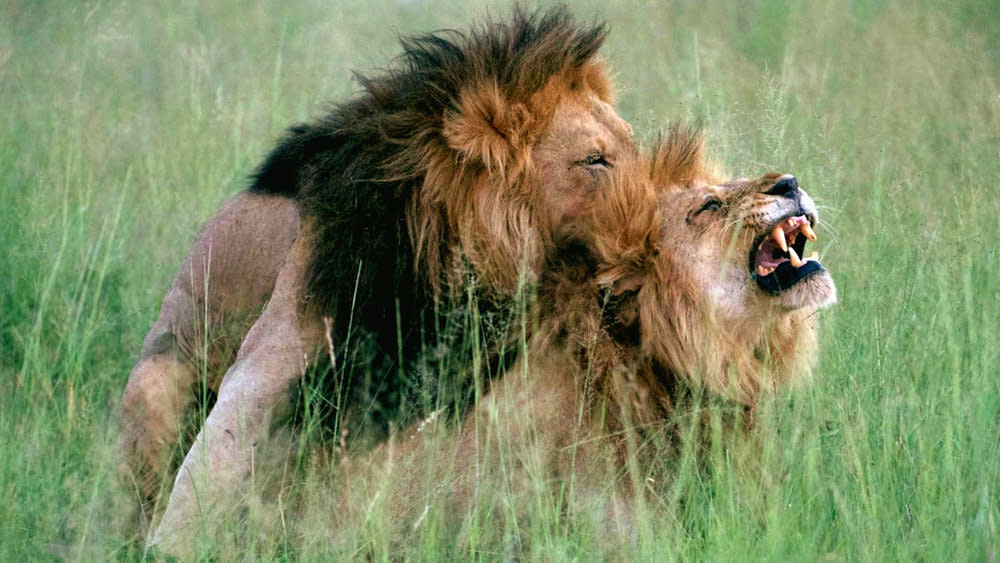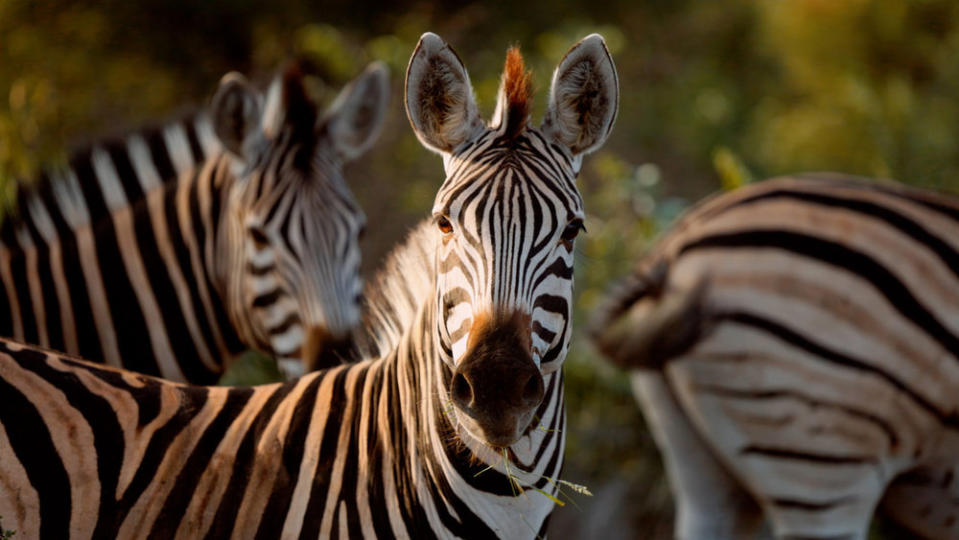‘Animals Are Nowhere Near as Straight as We Were Led to Believe’: Inside Peacock Doc ‘Queer Planet’

“Queer Planet” may seem like the kind of Pride Month programming that gets trotted out every June — “Oooh, look at the cute lil’ gay penguins!” — but this new 90-minute documentary has a lot more on its mind.
“[That] most forms of life do not reproduce strictly heterosexually like we do, is quite a staggering thing to realize,” “Queer Planet” producer and director Ed Watkins told Indiewire. Also staggering is how centuries of research into same-sex behavior in the animal kingdom was hidden or ignored. What “Queer Planet” celebrates should not be news to anyone (and it certainly is not to the array of fabulous talking heads seen throughout, commenting on their fields of expertise and offering the kind of witty commentary that you’d expect more from an esoteric stand-up special than a nature documentary). But the doc is something of a revelation.
More from IndieWire
Ably aided by narration from Andrew Rannells that marks this as a very gay time indeed (just try to keep a straight face, as it were, during the opening sequence), “Queer Planet” is as smart as it is silly and as important as it is celebratory. Now streaming on Peacock, IndieWire spoke to Watkins over email about the filmmaking process, why he’s tough on Charles Darwin, and his newfound expertise on the sex habits of mollusks.

IndieWire: The narration is a perfect match between content and performer. How early did Andrew Rannells come on, and how much (if at all) did his casting influence the writing?
Ed Watkins: I had the tone of the show in my mind from very early in production — fun, irreverent, surprising, and full of real facts. But Andrew’s casting really helped to solidify that further and steer the writing to a place that really clicked in the edit. Once we had him on board, it gave us a real voice to aim for and to shape the narration with him in mind. It was great to do the voice record with Andrew, his reactions to some of the scenes were priceless, and his vocal talent undeniable. We included a number of his adlibs and improvs in the final track lay.
What was the line when it came to making the voiceover unapologetically gay? Was there anything that just felt like too much?
The line we drew was that anything was on the table so long as it wasn’t offensive, overly crude, or untrue. We tried very hard to make sure that the show was accessible and welcoming to anyone who cares to watch it. It is unfailingly positive, there is extraordinarily little shade thrown except at the Victorians. If anything, I might have gotten a bit carried away critiquing Darwin — he was a little too obsessed with barnacles for my liking, and he married his cousin.
How did you find your talking heads? They’re all wildly more entertaining and witty than what most nature shows feature.
Finding our incredible, and diverse, cast of contributors was a major part of the pre-production of the show. We knew early on that the film would live or die by the folks who appeared on screen, so we made a huge effort to find contributors who were both engaging and had the real credentials behind them to talk about the subjects featured. We made hundreds of phone and video calls to scientists, authors, and educators before we managed to narrow it down to the dozen who appeared in the show. We also got incredibly lucky that our interviewees were all remarkable people. They put up with a lot from us! Our filming setup was very lightweight, just myself and my researcher, Chris, flying all over the place, interviewing and filming them ourselves. We often ended up in tiny studios with makeshift rigs, occasionally without functioning air conditioning. It all added to the informal, vaguely anarchic vibe that permeated their time on screen.
When it comes to the footage, how were you tracking down queer animals? What was the process for capturing them on film? (And what equipment was used?)
When I developed the show, we had a list of about 1,500 species in which same-sex behavior has been recorded and countless more with a wide variety of queer lifestyles, so we started with quite a lengthy list! I’ve been making wildlife films for over a decade, so I was able to whittle that down initially to those species that we had the most realistic chance of filming. There are also a number of great books on the topic, such as “Biological Exuberance” by Bruce Bagemihl (if you want an encyclopedic approach), or “Queer Ducks” by Eliot Schrefer (for something more fun and accessible) which helped to narrow down our research further. In the end, we opted to feature those animals that allowed us to highlight the incredible diversity of the natural world and for which we could tell memorable and visually stunning sequences backed up by published science. George (assistant producer), Chris (researcher), and I shot the majority of the film ourselves (wildlife and interviews), using a mix of high-end cinema cameras (RED GEMINI) and lower-end DSLRs (A7S, FX6) with a mix of long lens glass (CN20s), specialist macro probe lenses, and primes for the interviews. We then leaned on our global network of independent wildlife camera operators to help film some of the stories in locations we couldn’t get to ourselves, like those in Africa and Australia.
The filming and production process was fast, much faster than a regular blue-chip documentary, but it suited the style of production. We filmed, edited, and delivered the whole show in less than a year. To say it was hectic is an understatement! We shot a total of 17 animal behavior sequences (partially or fully), 12 interviewees, a Mexican Pride Parade, and a gay rodeo. The most taxing to film were probably the flamingos in the Yucatan, in Mexico. Each day, we had to hike for about an hour through shallow, hyper-saline marshes and lakes, with all our equipment, to reach the nesting sites in the dark. Then set up our hides and sit in the sweltering sun until noon, when the birds rested, to leave. It was hot, dirty, smelly work. George braved the conditions for the longest, but the results were worth it! The weirdest to film were the leopard slugs over a series of sleepless nights in the summer, just outside Bristol, U.K. It was a sort of slimy fever dream with the behavior typically not happening until 1 or 2 a.m. I’m an expert on pairing slugs for mating now, I could probably open a mollusk version of Grindr.
There are so many “wow” moments in “Queer Planet.” For me, one of the biggest was the moment when you realize that centuries of research into the topic has been ignored or buried. What was your biggest wow moment while making it?
Realizing just how common queerness is in nature. The simple truth that when you include plants, fungi, and assorted microorganisms, most forms of life do not reproduce strictly heterosexually like we do is quite a staggering thing to realize. Coupled with the overwhelming evidence that animals are nowhere near as straight as we have been led to believe, you start to wonder what else you were taught as a child that will turn out to be nonsense. That, and the fact the leopard slugs have enormous umbrella-shaped penises that come out of their heads. That was a wow moment.
“Queer Planet” is now streaming on Peacock.
Best of IndieWire
The 14 Best Thrillers Streaming on Netflix in June, from 'Fair Play' to 'Emily the Criminal'
Unsimulated Sex Scenes in Film: 'Nymphomaniac,' 'The Brown Bunny,' 'Little Ashes,' and More
Every Palme d'Or Winner from the Cannes Film Festival, Ranked
Sign up for Indiewire's Newsletter. For the latest news, follow us on Facebook, Twitter, and Instagram.

 Yahoo News
Yahoo News 
